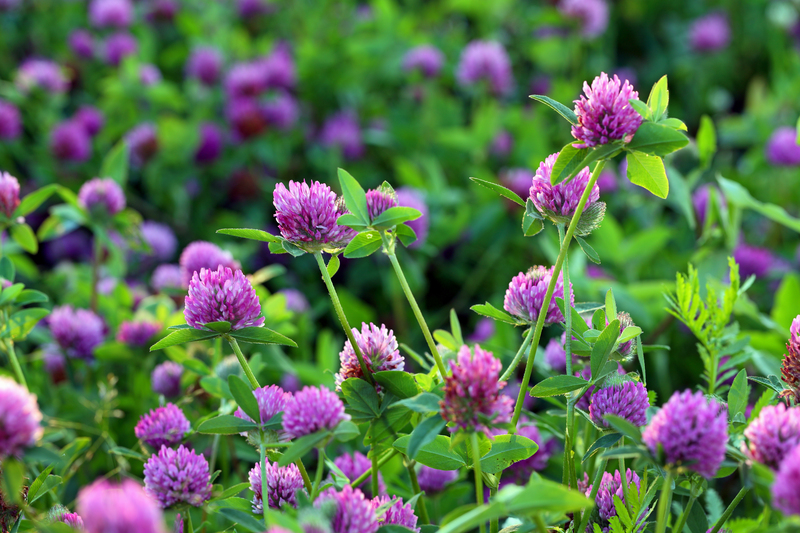Beginner-Friendly Lawn Hacks for a Vibrant and Inviting Yard
Dreaming of a lush, green, and welcoming yard but don't know where to start? Achieving an enviable lawn is both an art and a science, but it doesn't have to be overwhelming or expensive. In this comprehensive guide, we'll break down simple and beginner-friendly lawn tips that will transform your outdoor space into a vibrant oasis. Whether you're a new homeowner, a gardening novice, or just want to breathe new life into your yard, these hacks are easy to implement, budget-friendly, and guaranteed to yield results.
Why a Healthy Lawn Matters: Beyond Just Looks
Before diving into effective lawn hacks, it's worth understanding why maintaining a vibrant and inviting lawn is important. Besides the obvious curb appeal, a well-maintained lawn:
- Increases property value
- Reduces heat with its cooling effects
- Prevents erosion and improves soil health
- Provides a safe, inviting place for family and friends
- Improves air quality and absorbs noise
Lawn care for beginners can feel intimidating, but the right tools, knowledge, and simple lawn care hacks make all the difference.

1. Know Your Grass Type and Climate
Not all lawns are created equal! One of the foundational beginner lawn hacks is identifying the kind of grass in your yard. Different grasses have unique needs--what works for Bermuda might not suit Kentucky Bluegrass or Fescue.
Steps to Identify and Choose the Right Grass
- Check your zone: Cool-season grasses (e.g., Fescue, Ryegrass) thrive in northern climates; warm-season types (e.g., Bermuda, Zoysia) excel in southern zones.
- Observe your lawn: Look at the leaf texture and color--smooth-bladed vs. rough; deep green vs. lighter shades.
- Consult local nurseries: Local experts can help you determine which grass types grow best in your area.
- Match to your lifestyle: Some grasses are more drought- or traffic-resistant, ideal if you have pets or love outdoor gatherings.
Pro Tip: If you're starting from scratch or overseeding, opt for drought-resistant and low-maintenance varieties for the easiest path to a healthy, inviting yard.
2. Simple Soil Testing: The Secret Ingredient
Healthy grass starts with healthy soil. One of the most overlooked lawn maintenance for beginners hacks is soil testing.
How to Test Your Soil (And Why It Matters)
- Buy a soil testing kit: Available at most garden stores and online.
- Take samples: Dig small plugs from multiple areas of your yard for an accurate reading.
- Follow instructions: Test for pH and nutrients like nitrogen, phosphorus, and potassium.
If your soil is too acidic or low in nutrients, grass won't thrive. Most lawns prefer a pH of 6.0-7.0. Amend soil with lime or sulfur for pH, and organic compost or specific fertilizers for nutrients. This quick step is a game-changer for long-lasting, vibrant lawns.
3. Mowing Magic: Mow High, Mow Often
Mowing seems straightforward, but it's easy to make mistakes that leave lawns patchy or stressed. Here's a key lawn care hack for beginners:
Best Practices for Beginner Lawn Mowing
- Set your mower blade higher: Cutting grass to 3-4 inches protects the roots and shades out weeds.
- Never cut more than one-third: Removing too much in one pass shocks the grass.
- Alternate patterns: Change direction each mow to prevent ruts and encourage upright growth.
- Sharpen blades regularly: Dull blades tear grass, leading to a brown, frayed appearance.
Did you know? Leaving grass clippings on the lawn--called grasscycling--provides up to 25% of your yard's yearly fertilizer needs, saving you time and money!
4. Smart Watering Techniques
Many beginners water too frequently or at the wrong times. To promote deep roots and reduce disease, use these lawn watering hacks:
Steps for Efficient Watering
- Water early in the morning: Minimizes evaporation and reduces disease risk.
- Deep and infrequent: Aim for about 1 inch per week in one or two sessions to encourage deep roots.
- Use a rain gauge or tuna can: Place one on your lawn to measure when you've watered enough.
- Adjust sprinklers: Ensure water reaches every zone; reposition if you see dry spots.
Remember, overwatering can harm your lawn by choking the roots and inviting pests. Less is often more!
5. Feed Your Lawn the Natural Way
One of the easiest lawn hacks for beginners is supplementing with organic lawn food. Avoid harsh chemicals and try these DIY options:
- Compost: Spread a thin layer (known as topdressing) for slow-release nutrients.
- Grass clippings: As mentioned, they're a natural fertilizer.
- Mulched leaves: Shredded fall leaves add nitrogen and improve soil as they decompose.
- Coffee grounds: Sprinkle around high-traffic zones for a gentle nitrogen boost.
Natural fertilizers support healthy soil microbes, which in turn foster strong, green grass and fewer lawn problems over the long run.
6. Aerate for Growth
Another beginner-friendly trick for a greener yard is aeration. Over time, soil becomes compacted from foot traffic, weather, and mowing. This limits root growth and nutrient absorption.
How to Aerate Your Lawn
- Rent a core aerator or use a handheld aerator for small lawns.
- Best done in spring or fall when grass is actively growing.
- Leave soil plugs on the lawn to decompose naturally.
Aerating your yard just once a year can radically improve water penetration and help your grass grow thicker and healthier in a matter of weeks.
7. Say Goodbye to Weeds Naturally
Tackling weeds can be a headache, especially for beginners. Instead of harsh chemicals, try these natural weed control hacks that keep your lawn inviting and safe for kids and pets:
- Hand-pulling: Remove weeds after rain for easier root removal.
- Boiling water: Pour carefully on trouble spots for spot treatment (keep away from grass roots).
- Mulch borders: Add wood chips or bark to garden beds to prevent weed seeds from germinating.
- Corn gluten meal: Apply in early spring to suppress weed seed growth naturally.
Consistent mowing, proper fertilization, and watering discourage many weeds by helping grass outcompete them.
8. Patch Bare Spots Quickly
Bare patches can make your yard look neglected. Here's a quick and easy beginner hack for repairing them:
Steps to Repair Bare Lawn Spots
- Remove debris and loosen the soil in the bare area.
- Mix grass seed appropriate for your climate with some compost.
- Spread and press gently for good seed-to-soil contact.
- Keep moist until seeds germinate, then water as usual.
Extra tip: Use a lawn patch kit--pre-mixed seed, fertilizer, and mulch--available at garden centers for extra-easy results.
9. Edge for a Professional Finish
Crisp lawn edges deliver instant curb appeal. For an inviting, tidy yard, follow these edging hacks:
- Use a flat-edged shovel: Cut clean lines along driveways, paths, and garden beds.
- Try string trimmers: For curved beds and tricky obstacles.
- Install physical barriers: Brick, stone, or plastic edging keeps roots and mulch contained.
Set aside an afternoon a month for edging--it's fast, easy, and dramatically ups your lawn's wow-factor.
10. Implement Simple Lawn Care Routines
Consistency is the secret to a vibrant and inviting yard. Base your routines on the seasons and use reminders on your phone or calendar. Here's a sample annual beginner lawn care schedule:
- Spring: Rake, aerate, overseed, fertilize, start regular mowing.
- Summer: Mow high, water deeply, edge, spot-weed.
- Fall: Aerate, fertilize, overseed, mulch leaves, reduce watering as weather cools.
- Winter: Limit traffic on frosty lawns; tidy up debris as needed.
Simple routines prevent most common lawn problems and make yard care easier and more enjoyable, even for total beginners.
Bonus: Lawn Decor and DIY Furniture for Welcoming Vibes
Once your grass is thriving, why not make the yard more inviting with a few finishing touches?
Beginner Ideas for Quick Lawn Upgrades
- Add a seating area: Repurpose pallets for a rustic bench or try outdoor beanbags for instant charm.
- Create pathways: Lay stepping stones to encourage foot traffic and protect the grass.
- Install solar lights: These bring ambiance without needing electrical work.
- Use pots and planters: Brighten up dull corners and add height variation to your landscape.
Simple, cost-effective decor and DIY touches make your vibrant lawn a true extension of your living space, encouraging outdoor family time and gatherings with friends.
Common Lawn Care Mistakes to Avoid
Now that you know the top beginner-friendly lawn hacks, avoid these common missteps:
- Over-fertilizing: Can burn grass and damage beneficial soil microbes.
- Mowing too short: Weakens the lawn and exposes soil to weeds and sun.
- Watering shallowly: Leads to weak roots, making the lawn prone to drought and pests.
- Ignoring seasonal care: Skipping aeration, overseeding, or winter prep leads to thin, patchy grass.
Correct these errors early to enjoy a thriving, lush, and inviting yard year-round!

Frequently Asked Questions - Vibrant Lawn for Beginners
How often should beginners water their lawn?
Generally, water once or twice per week, delivering about one inch of water each time, depending on weather and soil type.
What's the best beginner fertilizer?
Choose a slow-release organic fertilizer or compost. These feed your lawn gradually, reducing the risk of burning and promoting healthy soil.
How can I make my lawn thicker without chemicals?
Regular overseeding, aeration, and mulching with grass clippings are the best natural hacks. Keep up with mowing and watering, and bare spots will fill in quickly.
Conclusion: A Vibrant Lawn is Within Reach for Every Beginner!
Transforming your yard from bland to beautiful doesn't require a landscaping degree or a huge budget. With these easy, beginner-friendly lawn hacks for a vibrant and inviting yard, you'll enjoy lush grass, increased curb appeal, and a space that welcomes relaxation and fun. Start small, stay consistent, and watch your outdoor oasis come to life this season!
Ready to create your perfect yard? Put these beginner lawn tips into action and enjoy the transformation!